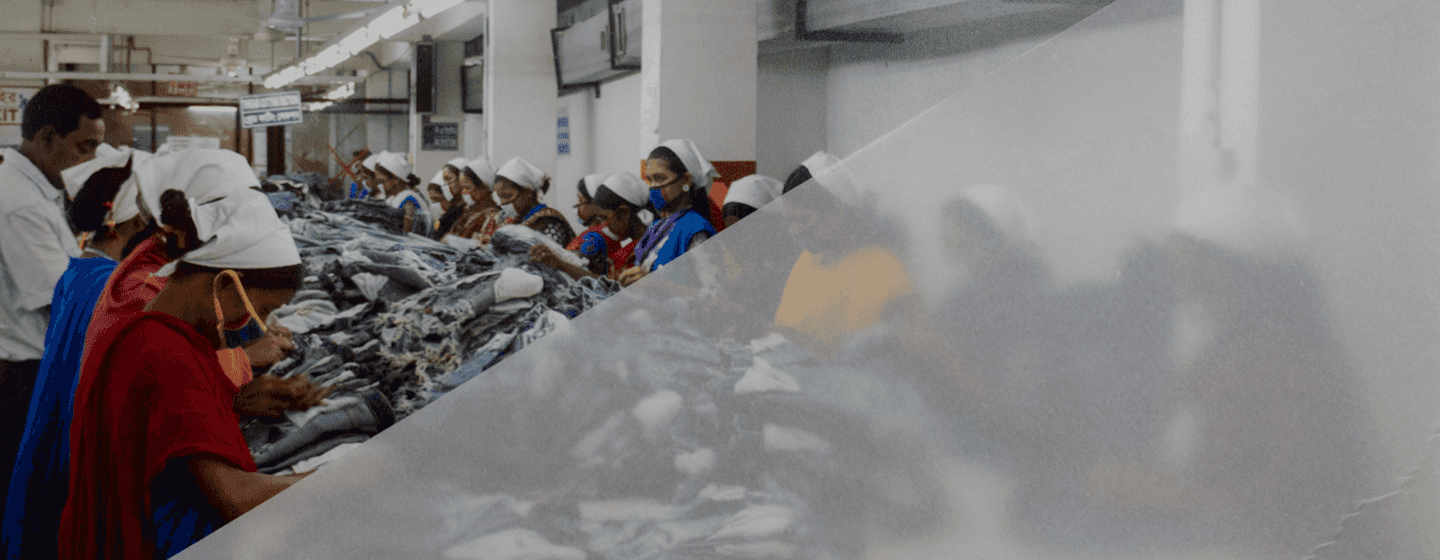Why disclose?

Since 2016, supply chain transparency in the apparel industry has grown tremendously. Dozens of companies now publish the names, addresses, and other details of supplier factories. Some apparel companies have innovated and moved beyond publishing only their tier-1 supplier factories, leading the way among their industry peers.
This discernible shift toward publicly disclosing supply chain data signals greater transparency as the direction in which the industry is moving. But many companies lag behind, resisting the publication of factory-level information and questioning the utility of transparency even though it has long been recognized as industry good practice.
More companies need to step out of their comfort zone and conform to industry practice.
The top three reasons for supply chain transparency
Supply chain transparency—starting with publishing names, addresses, and other important information about factories producing for global apparel companies— is a powerful tool to assert workers’ rights, advance ethical business practices, and build stakeholder trust.
Supply chain transparency can help workers gain faster access to redress for human rights abuses
While disclosure of factory lists will not automatically lead to improved working conditions on the ground, it is a critical first step towards that goal.
When supply chains are opaque, workers and labor rights advocates have to expend substantial time and effort trying to collect brand labels or using other methods to determine which companies are sourcing from factories where human rights abuses are occurring. This costs valuable time and puts workers at risk of retaliation and continued exposure to dangerous or abusive working conditions.
In contrast, public disclosure of supply chain information helps to ensure identification of global apparel companies whose branded products are made in factories where empoyers abuse workers’ rights. Knowing which companies are sourcing from these factories enables workers, labor organizations, human rights groups, and others to swiftly alert company representatives and call on them to take steps to ensure that abuses stop and workers get remedies. By publicly disclosing supply chain information, apparel brands and retailers help remove a key barrier to workers or other stakeholders being able to access the company’s complaint mechanisms or other remedies.
Supply chain transparency is central to conducting effective human rights due diligence
In order to meet their responsibility to respect human rights, companies need to take steps to prevent human rights risks throughout their supply chains, and identify and address any abuses that arise despite those preventative efforts. Factory list disclosure is critical to conduct this ongoing human rights due diligence effectively.
It is difficult for companies to continuously monitor for persistent labor rights problems in specific supplier factories and verify progress toward corrective action if they limit their sources of information to inspections and labor compliance audits by apparel companies’ own social compliance staff and third-party monitors. These tools are not sufficient in and of themselves to detect all instances of abuse.
Factory disclosure allows apparel companies to receive credible information from workers and worker rights advocates between periodic factory audits, bolstering companies’ human rights monitoring. It also helps to determine whether a brand has sufficient leverage or influence in a particular factory or country to uphold worker rights, and facilitates brand collaboration and collective action to stop, prevent, mitigate, and provide a remedy for labor abuses.
When workers and their advocates know which brands to alert about abuses in a factory, it gives those companies an opportunity to intervene —sooner rather than later— to stop and rectify abuses. Apparel companies that are unwilling to at least publish the names, addresses and other basic details about their supplier factories are failing to implement effective human rights due diligence.
Publishing supply chain information builds trust
Publishing supply chain information builds the trust of workers, consumers, labor advocates, and investors by signaling a company’s commitment to accountability.
In addition to calls for supply chain disclosure from workers and their advocates, recent surveys show that consumers have consistently demanded greater transparency and that brand transparency builds consumer trust. Transparency of global supply chains is also increasingly recognized by investors as a metric for evaluating the robustness of business human rights practices.
When brands and retailers are transparent about where their goods are produced, it sends a strong message that the apparel company does not fear being held accountable when labor rights abuses are found in its supply chain, and makes a company’s assertion that it is concerned about labor practices in its supplier factories more credible.
When workers and their advocates know which brands to alert about abuses in a factory, it gives those companies an opportunity to intervene —sooner rather than later— to stop and rectify abuses. Apparel companies that are unwilling to at least publish the names, addresses and other basic details about their supplier factories are failing to implement effective human rights due diligence.
The start of a journey
Companies that align with the Pledge agree to publish information identifying the factories that produce their goods, addressing a key obstacle to rooting out abusive labor practices across the industry and helping to prevent disasters like the Rana Plaza collapse.

But the Transparency Pledge is not the end of the story.
Apparel brands and retailers can and should do far more to ensure respect for human rights in their supply chains. Nonetheless, signing and implementing the Pledge is one important step in a holistic effort to improve corporate accountability in the garment industry.